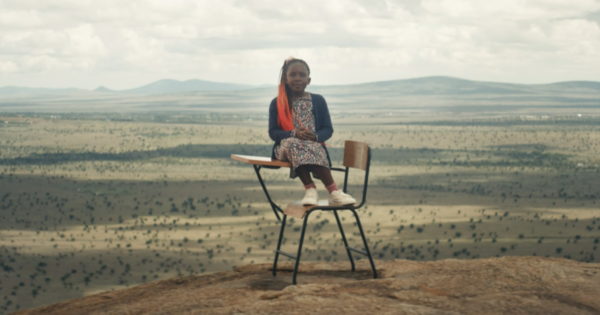Martech’s recession playbook—how to get more out of existing content
Plus, the first and last things to cut in a downturn.

While the overall economy might avoid a recession, martech has been feeling the pinch for the last 12 months. Tom Bianchi, VP of growth marketing at Acquia, and Warren Daniels, CMO of Bynder, describe how their firms are responding to market conditions while offering insights for the industry at large.
Both expressed a renewed commitment to customer marketing while looking for upsell opportunities. Both are stretching the value of existing content, repurposing some while slicing and dicing the best performers. Bianchi highlighted the power of Acquia’s choose-your-own-adventure clickable demos while Daniels noted how Bynder is ungating educational content.
What’s the first thing you did to prepare digital experiences for a downturn?
Tom Bianchi: We’ve restructured our website to focus on desired customer outcomes. Either you’re a website builder or a content creator, or you might be focused on business outcomes of things like revenue through digital experience. We’ve brought our content up to that level, which then ticks off a couple of personas and a couple of use cases in each circumstance.
We call them landing zones—for each landing zone on our website, we have hundreds of blog posts, dozens of pages, we relate our products to them. It’s a comprehensive set of materials to help customers solve their problems.
Warren Daniels: The first thing that we did was hit up our customers. From what we heard, job No. 1 has been to pivot our messaging to be centered more heavily on tangible ROI and value creation and at the same time to identify new personas that we typically wouldn’t have had to engage with in a sales cycle.
It’s clear that businesses are going to be competing more fiercely for less wallet share in the short term. We’ve thought very carefully about to drive content and engagement in the market where differentiation is increasingly important. Content drives clicks, engagement and ultimately, conversion.
What content is working?
Daniels: We’ve placed greater emphasis on a derivatives strategy. Rather than generating lots of content, we’ve pivoted to one piece of core content that carries consistent ROI and value-based messaging. We then shatter that for the different channels we execute through.
Secondly, you don’t need to create lots of new content for new audiences. What we’ve done is we’ve started to look at the existing content that we’ve got and simply rename and repurpose that for a new audience.
We have an “ROI guide for digital asset management”—DAM for short—and we changed the title to “The CFO guide to DAM ROI.” Then we made some minor amendments to the text and the content in between so that we now have a piece of hero content that’s relevant for CFOs.
Bianchi: Less is more. It’s really about quality. There’s no need to have 4,000 blogs out there; you just need 200 to 300 amazing blogs that perform really well from an SEO perspective. We’ve removed a lot of content from our website and are focused on a value exchange. When we create a piece of content it’s created with purpose.
It’s not necessarily some trade secret or anything like that, but we were struggling with the capacity to generate video at the rate we needed when we were trying to keep up with the content conveyor belt. As soon as we started thinking more carefully about that, and producing the right levels of content, it freed up resources to put effort into video, the medium that we know everybody likes to consume.
What are content tips to help with conversion?
Bianchi: One of the main areas that we focused on is the demo experience. Through testing, we found that different buyers wanted different things from different outcomes. Some people want a real-life person to demonstrate a product. For others, a demo is synonymous with trial or a hands-on experience. Some people want something that’s in between.
We put a lot of work into updating our user experience for demo requests into a choose-your-own-adventure process: They can speak to a person, get hands-on with the product or the third and final option, use a clickable demo. A clickable demo is a web mockup of our product that looks remarkably identical. It’s a guided tour of our products. We help coach them through that experience with some guided workflows that really make a difference.
We’ve seen a massive improvement in conversion rate not only in terms of people clicking on the form initially but actually converting through to qualified pipeline. Clickable demos are the top converting option.
Daniels: We’ve started to un-gate a lot of our educational content so that we can reduce friction in the buying process and get people educated about DAM and DAM platforms. We’ve added more high-value CTAs, so demos, pricing requests, and the like to those pieces of content so that more folks are consuming our messaging. We’ve seen about a 20% uplift in engagement. And we’ve seen scaling our CTAs during that period, as well.
What are the first and last things to cut in a downturn?
Daniels: The first thing: travel and expenses; can you manage with one less executive face-to-face meeting? Can you be more efficient with how you staff trade shows?
The last thing: Customer marketing. If you’ve got headroom to upsell into existing customers, then that can offset and de-risk any volatility and new business.
Bianchi: The first thing: tech that you don’t use. That might sound controversial coming from a martech vendor, but we went through a tech audit ourselves to make sure we had only tools that we were still getting value from.
The last thing: Great people. Your team can be a force multiplier and take advantage of the tech stack and your program dollars, ultimately making a big impact in the market.

 Lynk
Lynk 































